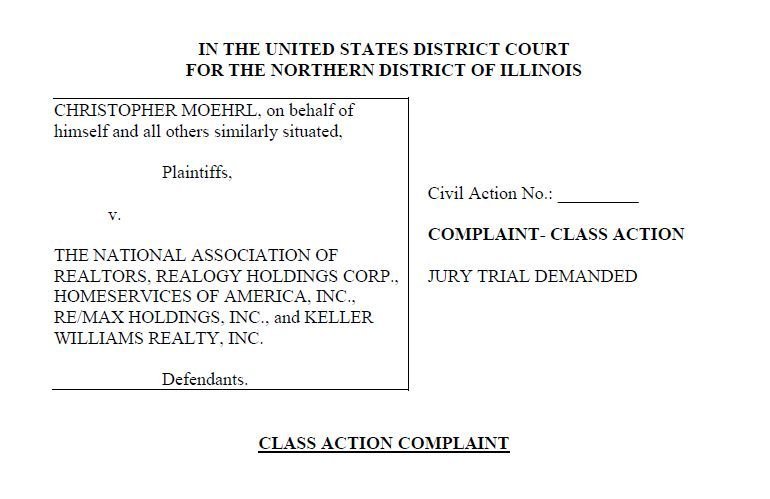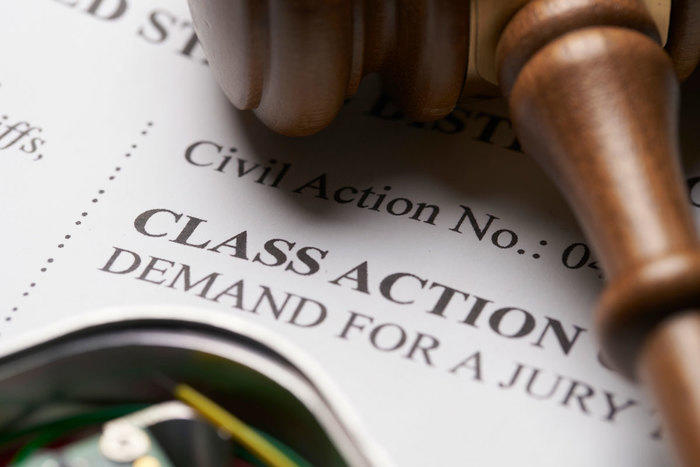Archer-Daniels-Midland Class Action Lawsuit: Your Legal Roadmap
Wiki Article
Understanding Course Action Suits: A Comprehensive Overview
Course activity lawsuits have actually become significantly common in today's legal landscape, shaping the means people look for justice against effective corporations. In this thorough overview, we will discover the intricacies of course activity suits, consisting of the types of instances that can be gone after, the steps involved in submitting a suit, and the benefits and downsides of pursuing collective legal action.What Is a Course Activity Suit?
A class activity lawsuit is a legal action in which a group of individuals jointly brings an insurance claim versus an accused or defendants for similar injury or misdeed. This sort of claim enables a lot of individuals who have suffered a similar damage to join pressures and go after lawsuit with each other, instead of submitting individual suits. Class activity legal actions are frequently used in situations where the harm or misdeed influences a large group of individuals, such as item responsibility instances, ecological pollution situations, or cases involving consumer scams.
In order for a claim to be certified as a class activity, particular needs have to be fulfilled. These demands commonly consist of numerosity (a a great deal of potential class members), commonness (common inquiries of regulation or truth), typicality (the insurance claims of the representative parties are regular of the course), and adequacy of depiction (the agent celebrations will rather and adequately secure the passions of the class) When a class activity suit is certified, notice is offered to potential course participants, that after that have the alternative to sign up with the suit or opt-out if they want to pursue their very own individual cases.
Types of Course Activity Claims
There are numerous groups of class activity claims that include a variety of legal issues and sectors. One usual kind is consumer class activities, which entail claims made by a group of customers versus a company for incorrect advertising and marketing, defective items, or unreasonable service practices. These claims typically look for settlement for the affected consumers and seek to hold the firm liable for its activities.Another group is securities class actions, which are brought by financiers versus a firm for alleged safety and securities scams. Archer-Daniels-Midland class action lawsuit. These suits commonly include insurance claims of misleading statements or omissions in the business's financial statements or disclosures, which caused the financiers to experience financial losses
Employment course actions are likewise prevalent, involving cases made by a team of employees versus their company for infractions of labor legislations, such as wage, discrimination and hour violations, or wrongful termination. These legal actions look for to secure the civil liberties of employees and ensure reasonable therapy in the workplace.

Steps Associated With Declaring a Course Action Lawsuit
Course action lawsuits need a particular collection of steps to be complied with in order to efficiently launch the legal procedure. Once the class participants are determined, the following step is to designate a lead plaintiff or class rep that will certainly act on part of the whole class.After the lead complainant is selected, the next step is to submit a grievance with the court. The complaint details the claims against the relief and the accused looked for by the course. It is essential to make certain that the issue satisfies all the lawful requirements and clearly mentions the cases of the course participants.
When the issue is investigate this site filed, the court will evaluate it and determine if it meets the needed standards to continue as a class action suit. If the court approves the class accreditation, notification will be sent out to all prospective course participants informing them concerning the claim and their rights to participate or opt-out.
Complying with the course certification, the situation will proceed via the discovery stage, where both parties exchange pertinent info and evidence. This may include depositions, interrogatories, and paper requests.
Benefits and Downsides of Class Action Suits
One of the crucial advantages and drawbacks of seeking a course activity suit exists in its prospective to offer cumulative resolution for a team of individuals with comparable insurance claims versus an accused. The key advantage of a course action claim is that it allows people with small claims to sign up with together and take on an effective defendant.However, there are also disadvantages to course activity lawsuits. Because the lead complainant stands for the whole course, there is a danger that their passions might not straighten with those of all course participants. In some instances, the damages awarded in a class action suit may be split amongst a huge number of course participants, resulting in reasonably tiny payment for each individual.
Recent Site Class Action Lawsuit Cases
In the last few years, a number of considerable class action lawsuit instances have emerged, establishing criteria and forming the landscape of collective lawsuit. These landmark cases have actually highlighted numerous problems and led to substantial settlements, emphasizing the power of class activity claims in seeking justice and holding corporations answerable.One notable instance is the Volkswagen "Dieselgate" scandal, where the car manufacturer admitted to installing software in their lorries to rip off on emissions examinations. This situation led to a class activity lawsuit her response submitted by affected customers, bring about a $14.7 billion negotiation. This landmark instance not only highlighted company deception yet likewise brought attention to the ecological impact of such actions.
Thousands of legal actions were filed against the business, declaring that their talc-based products triggered ovarian cancer cells and mesothelioma cancer. These cases resulted in considerable jury judgments, with the greatest being $4.7 billion.
Moreover, the opioid dilemma has likewise led to numerous course activity lawsuits. Pharmaceutical suppliers, business, and drug stores have faced legal action for their alleged role in fueling the epidemic. These cases aim to hold these entities responsible for their actions and look for settlement for the communities influenced by the situation.
These current site situations demonstrate the importance of course activity claims in resolving company misdeed and supplying justice for afflicted individuals. They work as a reminder of the power of cumulative lawful action in holding powerful entities answerable and looking for fair payment for those harmed.
Final Thought
In verdict, class action legal actions supply an opportunity for individuals to seek justice and compensation for prevalent damage triggered by a defendant. While they have their advantages, such as efficiency and cost-effectiveness, there are also drawbacks, such as prospective delays and minimal specific control (BioVie class action lawsuit). Recent landmark situations have shown the significance of course action legal actions in attending to various concerns, highlighting the significance of this lawful system in ensuring accessibility to justice for a multitude of peopleThese requirements normally include numerosity (a huge number of potential course participants), commonality (typical questions of legislation or reality), typicality (the insurance claims of the depictive parties are regular of the class), and competence of representation (the rep parties will relatively and sufficiently protect the rate of interests of the course) Once a course activity suit is accredited, notice is offered to prospective class participants, who then have the choice to sign up with the suit or opt-out if they wish to pursue their own specific cases.
Once the course participants are identified, the next step is to select a lead complainant or class agent that will certainly act on part of the entire class. Since the lead here complainant stands for the whole course, there is a threat that their interests might not align with those of all class members. In some cases, the damages awarded in a class activity lawsuit may be divided among a big number of class participants, resulting in relatively little compensation for each person.
Report this wiki page